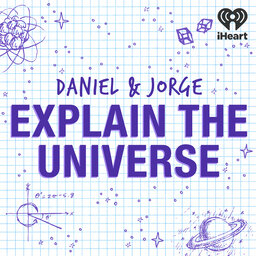Could our galaxy have a dark matter center?
Daniel and Jorge explore the idea that the center of the galaxy might hold a huge blob of dark matter rather than a black hole.
Learn more about your ad-choices at https://www.iheartpodcastnetwork.com
See omnystudio.com/listener for privacy information.
 Daniel and Jorge Explain the Universe
Daniel and Jorge Explain the Universe


